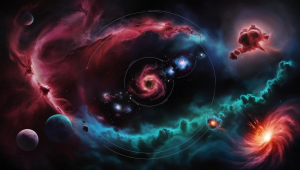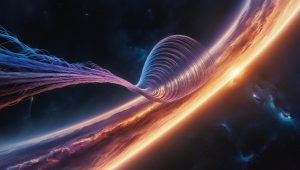
Voyager 1: The Cosmic Traveler Still Going Solid After 45 Years
If you go outdoors on a clear evening and also search for it, you might have the ability to see Jupiter beaming brilliantly amongst the celebrities. At the exact same
What if you could rocket from Earth, not to the Moon or Mars, but down a wormhole that loops all the way across the vast Milky Way, slashing travel time down to mere minutes? Science fiction, you say? Well, with our abilities to journey to the far reaches of the cosmos still in their infancy, it can’t hurt to dream big. Here enters the wormhole: a theoretical spacetime warp that brings previously unreachable distances within easy reach. In the past few years, expert analysis of these exotic phenomena has done more than make them believable. It has made them seem almost inevitable. Wormholes are nifty pieces of theoretical machinery.
What’s a Wormhole, Anyway?
Imagine a wormhole as a cosmic tunnel, a hidden portal that links two distant regions in space or even space and time itself. Imagine two pieces of paper, representing two distant parts of the Universe, butted side by side. Ordinarily, to travel between them would require going around, folding the paper. But in a wormhole? You poke a hole straight through, superimposing the two parallel sheets of space at a distance. We’d have a shortcut: from one place to another, across even immense distances.
How Do These Tunnels Work?
Here’s where things get tricky. Wormholes are based on the mind-blowing physics of Einstein’s theory of general relativity. They’re essentially folds in spacetime caused by incredibly massive objects like black holes. Now, imagine throwing a ball on a trampoline. The ball curves the fabric, right? That’s kind of what happens with spacetime near massive objects. And if the conditions are just right, those folds can create tunnels, or wormholes.
 A Closer Look at Wormhole Theories
A Closer Look at Wormhole TheoriesFor a few generations now, wormholes have been an alluring portal in space-time. Although they are still only hypothetical constructs confined to the domain of theoretical physics, the various kinds proposed provide tantalizing glimpses into some of the weirdness that potentially exists in our universe. So let us take a more interesting examination of these theories and avoid oversimplified concepts.
Consider that all of these are hypothetical constructions. We have not discovered any concrete evidence of their existence in spite of the fact that general relativity provides for them. Moreover, even if we happened upon a natural wormhole, it’s going to be stable and traversable or maybe not (completely unreached by us).
However, our current technology is still far from being adequate enough to build one, or at least utilize a natural one. It poses serious challenges due to huge gravitational forces involved, need for exotic matter among others and the unknowns about what they really are. That is what makes them interesting!
Theoretical as they may be, wormholes remind us of how vast and wondrous the universe is. They push the envelope of our knowledge and motivate us to go further into space-time mysteries. Thus while cosmic tunnels might not be available for hopping soon, the desire for knowledge and exploration remains ingrained within human nature. Remember that scientific exploration thrives on critical thinking backed by skepticism. As you get deeper into the world of wormholes and other mind-boggling concepts approach them with curiosity but also a critical eye.
Image source: Kurzgesagt

If you go outdoors on a clear evening and also search for it, you might have the ability to see Jupiter beaming brilliantly amongst the celebrities. At the exact same

Stars, the dazzling points of light that fill up the evening skies are the foundation of galaxies plus the cradles of life itself. From their birth in large clouds of

In the mission to recognize deep space mankind has actually developed progressively effective devices to observe deep space. Completion of this venture is the Extremely Large Telescope (ELT) which is

Space debris, also known as space junk, refers to the defunct artificial objects orbiting Earth. These objects include decommissioned satellites, spent rocket stages, and fragments from collisions and explosions.

The search for exoplanets– planets that orbit stars outside our planetary system– has actually quickly developed into one of the most interesting and dynamic fields of astronomy

Gravitational waves stand out as a remarkable finding in today’s universe explorations. Over a century ago Albert Einstein predicted that these waves exist in the fabric of space-time. By generating
Write to
Jasmine Gogoi at csr@scientifictemperament.com
Let’s develop our society with a scientific heart. Join us to build the scientifically nurtured future →